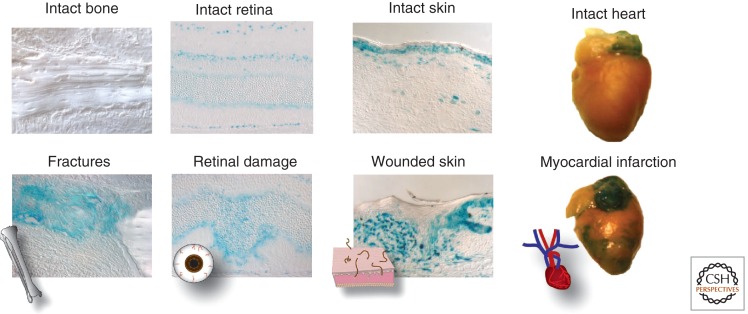Figure 2.
Wnt signaling is activated in response to injury. Damage in most tissues up-regulates Wnt signaling transiently at the injury site. While too much Wnt signaling has been shown to be deleterious, a number of studies have shown that the exogenous addition of Wnt signaling stimulates healing in a number of different injuries, including bone fractures, retinal damage, skin wounding, and myocardial infarction. (Wnt response seen here in blue, by X-gal staining of murine AxinLacZ/+ tissue.) (Heart images are thanks to Professor Joseph Wu.)

